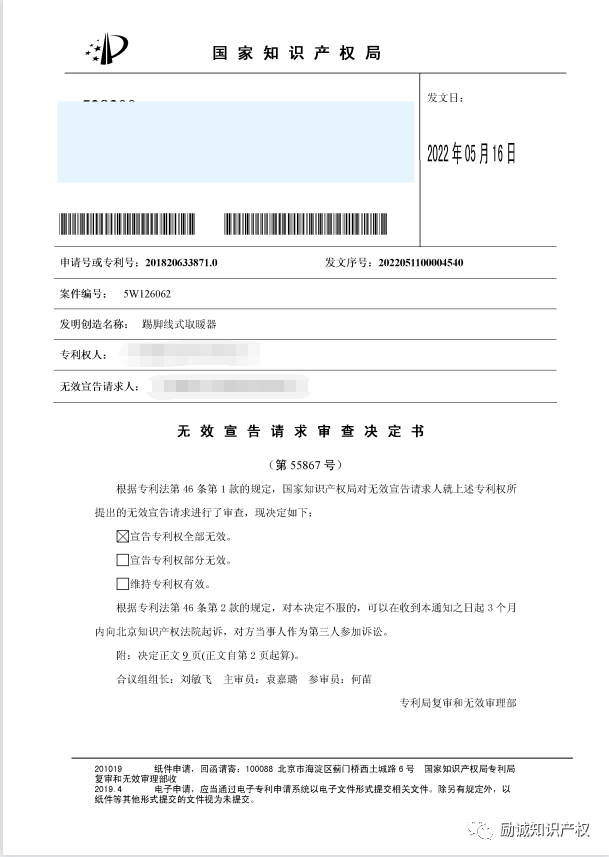

Recently, the State Intellectual Property Office issued the examination decision of the invalidation request No. 5W126062, declaring that the patent involved in the case was invalidated, and the invalidation request was concluded on May 16, 2022, and Liseng IP Attorneys won the invalidation lawsuit on behalf of the customer.
In November 2021, our customer entrusted LISENG to file an invalidation request for patent 201820633871.0 (skirting board heater) to resolve the legal dispute between it and the patent owner. In the process of this invalidation, the patentee modified the claims, and in the oral examination, LISENG recombined the evidence submitted earlier, and explicitly used the four patent documents submitted at the time of the invalidation request and one textbook submitted in oral proceeding as evidence.
When judging the inventive step of a claim, it is first necessary to compare the characteristics of the technical solution of the claim and the closest prior art and find out the distinguishing technical features, and then examine whether the prior art is given, and apply the above distinguishing technical features to the closest prior art to solve the technical problem of its enlightenment, if such revelation exists, the technical solution of the claim is obvious relative to the prior art.
In this case, Exhibit 1, Exhibit 3 and the patent in question belong to the same technical field, and Exhibit 1, as a design, only discloses the appearance of the foldable portable baseboard heater, and does not clearly explain the various components in the heater and the connection methods; Evidence 3 discloses the main components of the folding panel heater, but only uses a "hinge" stroke for the connection method. Therefore, the issue in this case is whether the structure coordinated by "shaft + hole" is a more conventional articulation method.
In view of this, LISENG provides the relevant description of the "articulation" structure in the textbook, which discloses a variety of different ways of articulating structure, including the patent in question, which is sufficient to prove that the articulation structure of the "shaft + hole" fit is common knowledge in the art, on this basis, the scheme of the claim of the patent in question is disclosed by evidence 1 + evidence 3 + common sense, and is not inventive.
1. When submitting an invalidation request, pay attention to foreign language evidence, two of the three patent documents used in this decision are foreign patents, especially evidence 3 (Japanese patent) played a crucial role in this case. In addition, the invalidation applicant needs to submit the translation within the prescribed time limit, and the patentee should also carefully check the content of the translation.
2. The deadline for submitting public knowledge evidence is relatively flexible, and it can make the evidence chain more complete and convincing in the case, and play a finishing role.
3. In the case of invalidation, the features expressly disclosed by the design can be used as evidence to comment on the newness of utility models and inventions.
